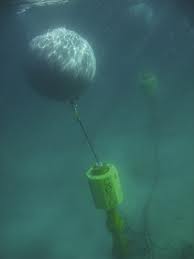Australia’s Carnegie Wave Energy may well be celebrating the fact that government grants will enable its first commercial-scale, grid connected wave energy plant to be built in Australia, but it seems clear that at least its medium-term opportunities will likely lie elsewhere.
The most obvious of these are in island grids, where wave energy is already competitive with the cost of imported diesel. But opportunities also lies in European countries, such as the UK, Ireland, France and Portugal, which are all providing healthy incentives as they compete to attract new wave energy technologies.
Carnegie Wave Energy, which is currently working on the installation of the 2MW installation near Fremantle, says its CETO technology will shortly have a levellised cost of energy of around 35c/kWh, which means it will be able to compete with the cost of diesel on island grids – hence its focus on opportunities in places such as Reunion Island, Bermuda, and in the Pacific – and also in the UK, which offers a 5 times multiplier on renewable obligation certificates (the local equivalent of RECs).
According to this graph below, made in a presentation to a Sydney conference last week, over the medium term, Carnegie expects its costs to fall to around 25c/kWh, making it cost competitive with offshore wind, and making it an interesting proposition for other wave-rich European countries such as Ireland, Portugal and France, while over the longer term, the aim is to bring the cost down to match that of onshore wind, or around 10c/kWh, where it will be competitive in countries such as Chile.
Carnegie Wave Energy expects to begin construction of its Perth Power Project – near the naval base at Garden Island – in the first quarter of 2013 and make its first power sales into the grid in the fourth quarter of 2013. The project recently attracted a $9.9 million grant from the federal government’s Emerging Renewables Program and a $5.5 million grant from the WA government, and the company is currently negotiating a power purchase agreement with local offtakers.
Later this year, the company is expecting that a pilot unit of its CETO 4 technology will be deployed on Reunion Island by French energy giant EDF and French construction company DCNS.







